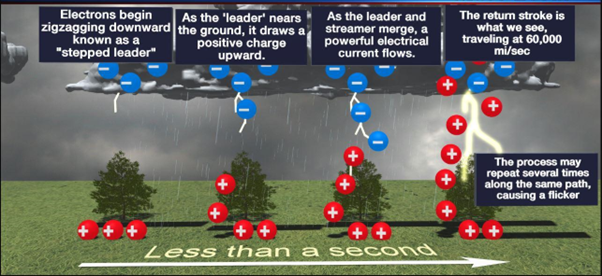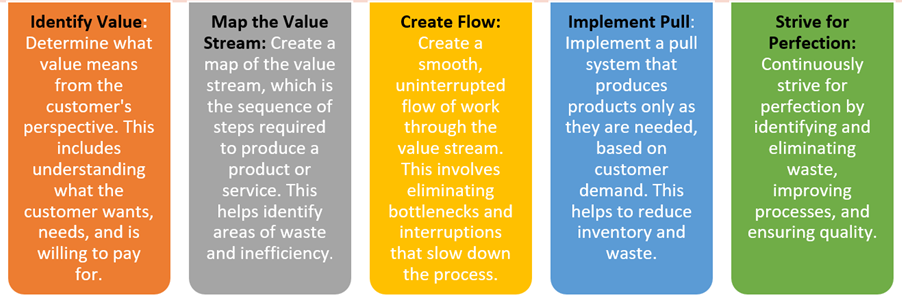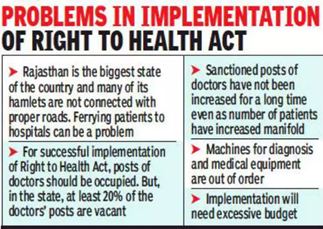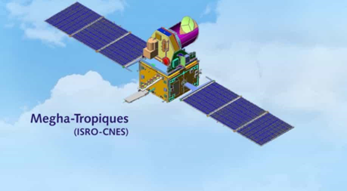Tuesday, 14th March 2023
The Worker, The Outsider - Edukemy Current Affairs
Exam View: Significance of Migrant workers, Vulnerabilities of Migrant Labourers, steps to ensure safety of migrants
In News: The recent social media rumours in Tamil Nadu (TN) about attacks against migrant workers has led to their exodus due to concerns for their safety. However officials claim that the exodus is due to Holi, and they will return to work after the festivals.
Significance of Migrant workers in TN
- TN is a key destination state for more than a million interstate migrant workers, who are often unskilled, informal and low-wage earners and play a crucial role in the state’s economic growth.
- Majority of migrants in TN are involved in dirty, dangerous, and demeaning jobs, which the locals do not prefer.
- The entire manufacturing and service sectors in Chennai are increasingly reliant on migrant labour
- Their absenteeism badly affected the state’s industries, creating state-wide panic and raising several concerns, especially for north Indian migrants.
Vulnerabilities of Migrant Labourers:
- Resentment by native population: The native population becomes hostile when migrants take up jobs that locals reject and occupy the labour market often due to better skill sets and low wage requirements than native labour.
- Politicisation of migrants: The “sons of the soil” politics causes antipathy towards migrants and results in conflicts between “insiders” and “outsiders”.
- Fear of loss of cultural and ethnic identity along with economic opportunities, by locals results in antagonism, sometimes, even violence against migrants.
- Scapegoating of Interstate Migrants: Political dispensation resorts to scapegoating of migrants to hide their failure to provide quality education, develop essential skills and create ample employment opportunities for its native population. Migrants are often portrayed as outsiders stealing local opportunities.
- Victims of Structural Violence: Structural violence, against interstate migrants which closely intersects with the politicisation of migrants and their stigmatised identities, exacerbate their risks, vulnerability and marginalisation.
- Mental health of migrants: The constant fear of their safety affects the mental health of migrants. In the absence of family, care groups and support mechanisms, the rumours on social media, fear and panic result in enormous stress, anxiety and mental health crises.
- Stigmatisation during COVID where they were considered as “carriers of infection” and “a burden on systems”. They were under suspicion, frequently humiliated and portrayed as “unwanted” in the host cities and even at their place of origin.
What should be done to ensure the safety of vulnerable migrant workers?
- Promoting the unionisation of migrant workers, portability of entitlements and ensuring universal social security provisions at the destination state could prove fruitful.
- Strong and committed political will and bureaucratic structures are required to prevent xenophobic and violent acts, stigmatisation and politics of scapegoating for political benefits.
- Draft National Migrant Labour policy and its future implementation must reflect a serious concern to protect interstate migrants from all forms of violence.
- Adequate steps must be taken to make migrants aware of their legal and civic rights by providing legal-aid and counselling services.
- Policy-level efforts should be taken to make urban centres more inclusive, adaptive and resilient.
- Need for more migration surveys to estimate inter-state migrants, similar to the Kerala model of migration surveys. Similar migration surveys in Odisha and Jharkhand have helped in generating a more nuanced understanding of migrants and have also aided in better policy-making in both the states of origin and destination.
Conclusion:
Migration is a constitutional right in India and a symbol of hope and prosperity. Without comprehensive and substantial steps, the meaningful inclusion of migrants remains a mere dream.
Source:
https://indianexpress.com/article/opinion/columns/migrant-fears-in-tamil-nadu-migration-constitutional-right-hope-prosperity-8484570/
States Demand to Declare Lightning as a Natural Disaster
In News: Recently States have demanded that “lightning” be declared as a “natural disaster” because deaths caused by it surpass any other disaster in India.
Currently accepted standards include cyclones, droughts, earthquakes, fires, floods, tsunamis, hailstorms, landslides, avalanches, cloudbursts, pest attacks, frosts, and cold waves as calamities that fall under the purview of the State Disaster Response Fund (SDRF), with 75% of the funding provided by the central government.
According to government statistics, more than 100,000 individuals have died in the nation as a result of lightning strikes between 1967 and 2019. This represents more than a third of the deaths brought on by natural disasters throughout this time.
About Lightening
- Lightning is a natural phenomenon that involves a brief but high-voltage electrical discharge between a cloud and the ground or within a cloud. This discharge is typically accompanied by a bright flash of light, a loud sound, and sometimes thunder.
- Cloud-to-ground (CG) lightning is particularly hazardous as its high electric voltage and current can result in electrocution. Conversely, inter- or intra-cloud lightning is harmless to people and only visible.

|
Process of Lightening |
|
Lightning and the Climate Change:
- California University in 2015 cautioned that a rise in one degree Celsius would result in a 12% increase in the frequency of lightning strikes.
- Geophysical Research Letters in March 2021 found connections between climate change and an increase in lightning strikes in the Arctic.
https://www.thehindu.com/news/national/states-demand-that-lightning-be-declared-a-natural-disaster/article66608065.ece
Landslides Atlas of India - Edukemy Current Affairs
In News: National Remote Sensing Centre (NRSC) under the Indian Space Research Organization (ISRO) has released the Landslide Atlas of India, a detailed guide identifying Landslide Hotspots in the country.
About Landslides and its causes:
- Landslides are natural disasters occurring mainly in mountainous terrains where there are conducive conditions of soil, rock, geology and slope. A sudden movement of rock, boulders, earth or debris down a slope is termed as a landslide.
- Natural causes of landslides are earthquakes, heavy rainfall, snow melting, undercutting of slopes due to flooding.
- Anthropogenic causes of landslides are excavation, cutting of hills and trees, excessive infrastructure development, and overgrazing by cattle.
- Considered as the most frequent natural disasters, landslides are extremely hazardous, posing a threat to human and animal lives, damaging property, roads and bridges, disrupting communication lines and snapping power lines.
- Landslides are classified based on the type of materials involved (rock, debris, soil, loose mud), type of movement of the material (fall, topple, slide, rotational slide or translational slide), and type of flow of the material.
Vulnerability of India to Landslides:
- India is considered among the top five landslide-prone countries globally, where at least one death per 100 sq km is reported in a year due to landslide events.
- Rainfall variability pattern is the biggest cause for landslides in India, with the Himalayas and the Western Ghats remaining highly vulnerable.
- Excluding snow covered areas, approximately 6% of the country is prone to landslides.
- Around 66.5 % of landslides are reported from the NW Himalayas, about 18.8 % from the NE Himalayas, and about 14.7 % from the Western Ghats.
- Nearly half of the country’s landslide-prone area (0.18 sq km) is located in the states of Assam, Arunachal Pradesh, Sikkim, Meghalaya, Mizoram, Manipur, Tripura and Nagaland.
- Uttarakhand, Himachal Pradesh, Jammu and Kashmir cover 0.14 million sq km of the total landslide-prone areas.
- In the Western Ghats, despite fewer events, landslides were found to be making inhabitants significantly vulnerable to fatalities, especially in Kerala.

Key Highlights of the landslide atlas:
- Landslides mapped in the ISRO atlas are mainly event-based and season-based.
- Uttarakhand, Kerala, Jammu and Kashmir, Mizoram, Tripura, Nagaland and Arunachal Pradesh reported the highest number of landslides during 1998 – 2022.
- Mizoram topped the list, recording 12,385 landslide events in the past 25 years, of which 8,926 were recorded in 2017 alone. Mizoram is followed by Uttarakhand (11,219) and Kerala.
- The number of districts with the maximum landslide exposure are in Arunachal Pradesh (16), Kerala (14), Uttarakhand and Jammu and Kashmir (13 each), Himachal Pradesh, Assam and Maharashtra (11 each), Mizoram (8) and Nagaland (7).
- NRSC ranked Rudraprayag in Uttarakhand at the top of 147 vulnerable districts. It has the highest landslide density in the country, along with having the highest exposure to total population and number of houses.

Source:
https://indianexpress.com/article/explained/explained-sci-tech/landslide-atlas-what-states-regions-are-most-vulnerable-8489965/
Least Developed Country Status
In News: Bhutan will become the seventh nation to graduate from the UN's list of Least Developed Countries (LDC) in 2023.
About Least Developed Country (LDC)
- LDCs are developing countries that exhibit the lowest indicators of socioeconomic development.
- They have low levels of income, human capital, and economic diversification, high levels of economic vulnerability.
- They also have a population that is disproportionately reliant on agriculture, natural resources, and primary commodities.
- They often face challenges such as poor infrastructure, low literacy rates, poor health outcomes, high levels of poverty and inequality, and exposure to natural disasters.
- Countries must meet a selection from all three criteria simultaneously and are reviewed on a three-year basis by the UN.
- Currently, there are 46 countries listed as LDCs by the UN of those, 33 are from Africa, nine from Asia, three from the Pacific, and one from the Caribbean.
- Graduating from the LDC list is a cause for celebration but also raises concerns about the loss of certain trade privileges associated with being an LDC.
Criteria to be LDC:
The United Nations identifies three criteria for a country to be classified as an LDC:
- Gross National Income (GNI) per capita below the threshold of USD 1,230 over a three-year average.
- Poor performance on a composite human assets index based on indicators including nutrition, health, and education.
- Economic vulnerability such as being prone to natural disasters and possessing structural economic constraints.
Countries that have graduated from the LDC list in the past include Botswana, Cape Verde, Maldives, Samoa, Equatorial Guinea, and Vanuatu.
https://indianexpress.com/article/explained/explained-global/bhutan-graduated-least-developed-country-status-explained-8492253/
LEAN Scheme for MSMEs - Edukemy Current Affairs
In News: Union minister for Micro, Small and Medium Enterprises (MSME) has recently launched the MSME Competitive (LEAN) scheme.
About
- The scheme aims to provide a roadmap to global competitiveness for the MSMEs of India by improving quality, productivity, and performance.
- The scheme is an extensive drive to create awareness among MSMEs about LEAN manufacturing practices.
- MSMEs will be motivated and incentivized to attain LEAN levels and become MSME champions.
- Through LEAN practices, MSMEs can reduce wastages, increase productivity, improve quality, work safely, expand their markets, and become competitive and profitable.
- Under the scheme, MSMEs will implement LEAN manufacturing tools like 5S, Kaizen, KANBAN, visual workplace, and Poka Yoka under the able guidance of trained and competent LEAN consultants to attain LEAN levels like basic, intermediate, and advanced.
Five Principles of LEAN Scheme

Government support:
- To support MSMEs, the government will contribute 90% of the implementation cost for handholding and consultancy fees. There will be an additional contribution of 5% for the MSMEs which are part of SFURTI clusters, owned by women/SC/ST and located in NER.
Implementing Agency:
- The National Productivity Council and Quality Council of India have been selected as National Monitoring and Implementing Units (NMIUs) for the scheme.
https://pib.gov.in/PressReleasePage.aspx?PRID=1905561
NASAMS - Edukemy Current Affairs
In News: Norway plans to provide Ukraine with two NASAMS firing units in collaboration with the United States.
About NASAMS:
- NASAMS stands for Norwegian Advanced Surface-to-Air Missile System.
- It is a medium-to long-range air defense system developed jointly by Norwegian and American companies.
- The system is used to protect critical infrastructure and military installations against airborne threats.
- NASAMS is highly mobile and flexible, and it can be deployed in a variety of different configurations to suit different operational requirements.

https://www.republicworld.com/world-news/russia-ukraine-crisis/norway-to-arm-ukraine-with-nasams-ground-based-air-defence-system-articleshow.html
Mount Merapi Volcano - Edukemy Current Affairs
In News: Recently, Indonesia’s Mount Merapi volcano erupts, tourism halts due to toxic gas and lava flows.
About
- Merapi (Mountain of Fire) is the most active of more than 120 active volcanoes in Indonesia and has repeatedly erupted with lava and gas.
- It is located near the centre of the island of Java and Indonesia’s cultural capital, Yogyakarta.'
- Merapi is the youngest in a group of volcanoes in southern Java. It is situated at a subduction zone, where the Indo-Australian Plate is subducting under the Sunda Plate.
- Indonesia, an archipelago of 270 million people, is prone to earthquakes and volcanic activity because it sits along the “Ring of Fire,” a horseshoe-shaped series of seismic fault lines around the Pacific Ocean.

Rajasthan Right to Health Bill
In News: The recently concluded Budget session of the Rajasthan Assembly revived the debate around the Right to Health Bill.
About Right to Health Bill
- The Bill provides rights to patients and healthcare providers, places the obligation on the government to protect these legal rights and mandates the setting up of grievance redressal mechanisms.
- Rajasthan residents will be entitled to free check-ups, drugs, diagnostics, emergency transport and care at all public health institutes, along with affordable surgeries.
- Doctors argue the Bill is both futile and an exercise in over-regulation. Clinics and hospitals are required to abide by State regulations and norms.
Constitutional Provision

- Constitution of India does not expressly mention about right to health, but it can infer from right to life and personal liberty enshrined in Article 21 of the Constitution.
- The courts judgement given reference of following Constitutional provisions
- Article 38, which mandates the promotion of public welfare, and
- Article 47, which requires the government to ensure the nutritional and healthcare needs of the populace are met.
Source:
https://epaper.thehindu.com/ccidist-ws/th/th_delhi/issues/28378/OPS/GBRAVTHUR.1+G3NAVTQ8P.1.html
Megha-Tropiques-1 - Edukemy Current Affairs
In News: Recently, Indian Space Research Organisation (ISRO) brought down the decommissioned weather satellite Megha-Tropiques-1 in a controlled manner and burned up in the atmosphere.
About Megha-Tropiques-1:
- Megha-Tropiques-1 was developed as a joint mission by India and France to study the tropics' water cycle and energy exchanges.
- The 1,000-kg satellite was launched in 2011 with a mission life of three years.
- Its objective was to gain a better understanding of meteorological and climatic processes in the tropics by collecting accurate data on the water and energy budget of the tropical atmosphere which would help in the development of different climate models.

United Nations and Inter-Agency Space Debris Coordination Committee (IADC) guidelines related to satellites:
- Stored fuel be removed from the spacecraft to ensure that no accidents break up the satellite in space and create more debris.
- Satellites should be deorbited – either through controlled entry over a safe impact zone (like the one ISRO did) or by bringing it down to reduce the orbital lifetime – the time it would take for a satellite to drop from a particular orbit by itself – to less than 25 years.
Source:
https://indianexpress.com/article/explained/explained-sci-tech/isro-brings-down-weather-satellite-controlled-re-entry-8489195/
TROPEX 23 - Edukemy Current Affairs
In News: The 2023 edition of Indian Navy’s major maritime exercise TROPEX, was conducted in the Indian Ocean Region.
About TROPEX 23
- The Theatre Level Operational Readiness Exercise (TROPEX) is conducted biennially and witnesses’ participation from all Indian Navy units and also Indian Army, Indian Air Force and Indian Coast Guard.
- TROPEX objective is to validate and refine the Navy’s Concept of Operations, including operational logistics and interoperability with other services.
- It also test the combat readiness of the combined Fleets of the Indian Navy to operate in a multi-threat environment.

https://www.pib.gov.in/PressReleasePage.aspx?PRID=1905198
Multi-Angle Imager for Aerosols missions – NASA
In News: NASA announced that it is partnering with the Italian Space Agency ASI to build and launch MAIA, or the Multi-Angle Imager for Aerosols missions.
About
- MAIA is an effort to investigate the health impacts of tiny airborne particles polluting some of the world’s most populous cities.
- It aims to understand the effects of different types of particle pollution on human health.
- MAIA observatory will consist of a satellite known as PLATiNO-2, provided by ASI, and a science instrument built at Nasa’s Jet Propulsion Laboratory in southern California.
- MAIA will have a point able Spectro polarimetric camera, which captures digital images at multiple angles in the ultraviolet, visible, near-infrared, and shortwave infrared portions of the electromagnetic spectrum.
- MAIA will be able to collect measurements of sunlight reflecting off airborne particles, which will help researchers determine the abundance, size, and optical properties of certain pollutants in the earth's atmosphere.
- Mission will explore the geographic distribution of airborne particles and also investigate how they relate to the patterns and prevalence of health problems stemming from poor air quality.
https://indianexpress.com/article/technology/science/nasa-asi-italian-space-agency-maia-air-pollution-satellite-8487717/
INS Sahyadri - Edukemy Current Affairs
In News: Recently, the Navy’s guided missile frigate INS Sahyadri joined two frontline warships of France in carrying out a two-day maritime partnership exercise in the Arabian Sea.
About
- INS Sahyadri is fitted with state-of-the-art weapons and sensors, which makes her capable of detecting and neutralising air, surface and sub-surface threats.
- INS Sahyadri (F49) is a Shivalik-class stealth multi-role frigate built for the Indian Navy.
- This class features improved stealth and land attack capabilities over the preceding Talwar-class frigates.
https://economictimes.indiatimes.com/news/defence/indias-missile-frigate-ins-sahyadri-participates-in-maritime-exercise-with-french-navy/articleshow/98583748.cms
Share the article
Get Latest Updates on Offers, Event dates, and free Mentorship sessions.

Get in touch with our Expert Academic Counsellors 👋
FAQs
UPSC Daily Current Affairs focuses on learning current events on a daily basis. An aspirant needs to study regular and updated information about current events, news, and relevant topics that are important for UPSC aspirants. It covers national and international affairs, government policies, socio-economic issues, science and technology advancements, and more.
UPSC Daily Current Affairs provides aspirants with a concise and comprehensive overview of the latest happenings and developments across various fields. It helps aspirants stay updated with current affairs and provides them with valuable insights and analysis, which are essential for answering questions in the UPSC examinations. It enhances their knowledge, analytical skills, and ability to connect current affairs with the UPSC syllabus.
UPSC Daily Current Affairs covers a wide range of topics, including politics, economics, science and technology, environment, social issues, governance, international relations, and more. It offers news summaries, in-depth analyses, editorials, opinion pieces, and relevant study materials. It also provides practice questions and quizzes to help aspirants test their understanding of current affairs.
Edukemy's UPSC Daily Current Affairs can be accessed through:
- UPSC Daily Current Affairs can be accessed through Current Affairs tab at the top of the Main Page of Edukemy.
- Edukemy Mobile app: The Daily Current Affairs can also be access through Edukemy Mobile App.
- Social media: Follow Edukemy’s official social media accounts or pages that provide UPSC Daily Current Affairs updates, including Facebook, Twitter, or Telegram channels.




